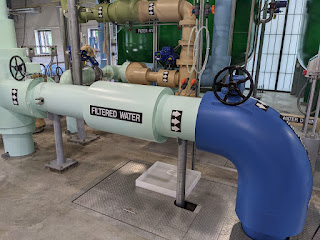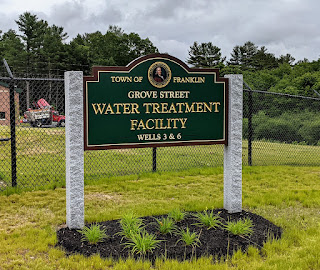FM #1043 = This is the Franklin Matters radio show, number 1043 in the series.
This session of the radio show shares the Town Council meeting held in Council Chambers on Wednesday, August 16, 2023. 8 members of the Council were present in the Council Chambers; Jones was absent, Hamblen covered as clerk for the meeting.
Quick recap:
One appointment to the Agricultural Commission was approved. Daniel Morse moved from an associate role to a full seat. Likely a future appointment coming for a new associate.
Two PUBLIC HEARINGS were conducted. These previously were reviewed by the Economic Development Subcommittee and forwarded with unanimous approval. Both measures passed by 8-0-1 (8 for, 0 against, 1 absent)
a. Zoning Bylaw Amendment 23-898: A Zoning Bylaw to Amend the Franklin Town Code at Chapter 185, Attachment 9, Schedule of Lot, Area, Frontage, Yard and Height Requirements
b. Zoning Bylaw Amendment 23-899: Marijuana Use Overlay District, A Zoning Bylaw Amendment to the Code of the Town of Franklin at Chapter 185, Section 5, Zoning Map
Presentation: DPW Project Updates - Brutus Cantoreggi, DPW Director
The presentation doc can be found here -> https://www.franklinma.gov/sites/g/files/vyhlif10036/f/pages/councl_update_aug_23.pdf
i. Current Project Updates
ii. Pavement Management Program & Sidewalk Plan
iii. Water Tank Master Plan
Discussion: Proposition 2 ½ Operating Override. As noted during the Joint Budget Subcommittee meeting, Jamie provided an overview on the Prop 2 ½ process. Attorney Cerel provided an overview of the more pertinent nuances of what could be done, and importantly what can’t be done.
i. Process - Jamie Hellen, Town Administrator
ii. Campaign & Political Finance and Ethics Laws - Mark Cerel, Town Attorney
The recording runs 3 hours and 8 minutes. Let’s listen to the Town Council meeting on July 19, 2023. Audio file -> https://franklin-ma-matters.captivate.fm/episode/fm-1043-town-council-mtg-08-16-23
--------------
The agenda doc can also be found on the Town of Franklin page ->
https://www.franklinma.gov/sites/g/files/vyhlif10036/f/agendas/town_council_agenda_-_aug_16_2023.pdf
My notes in one PDF file ->
https://drive.google.com/file/d/17mCqfZ5ZEaL6jBcpFEFFOrqh8NrW6noP/view?usp=drive_link
Town Council Quarterbacking with Chair Tom Mercer ->
https://www.franklinmatters.org/2023/08/this-town-council-quarterbacking.html
Franklin TV meeting video -> https://www.youtube.com/live/vlYIlCbc4hs
--------------
We are now producing this in collaboration with Franklin.TV and Franklin Public Radio (wfpr.fm) or 102.9 on the Franklin area radio dial.
This podcast is my public service effort for Franklin but we can't do it alone. We can always use your help.
How can you help?
If you can use the information that you find here, please tell your friends and neighbors
If you don't like something here, please let me know
Through this feedback loop we can continue to make improvements. I thank you for listening.
For additional information,
please visit Franklinmatters.org/ or www.franklin.news/
If you have questions or comments you can reach me directly at shersteve @ gmail dot com
The music for the intro and exit was provided by Michael Clark and the group "East of Shirley". The piece is titled "Ernesto, manana" c. Michael Clark & Tintype Tunes, 2008 and used with their permission.
I hope you enjoy!
------------------
You can also subscribe and listen to Franklin Matters audio on iTunes or your favorite podcast app; search in "podcasts" for "Franklin Matters"
 |
| DPW team presenting to the Town Council 08/16/23 |
 |
| DPW layouts the multi-year infrastructure project costs to the Town Council |











